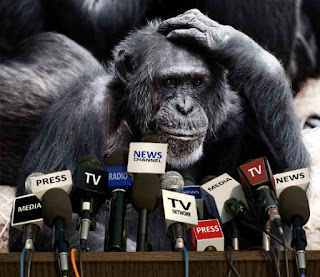Human and Chimpanzee Genomes in 3-D Trouble Evolutionists
Using bad science and Darwinian presuppositions, evolutionists in the 1970s stitched together the chimp genome, compared it with the human genome, and declared we were 98% similar. That falsehood lingers despite being refuted. Now 3-D genomes show even greater differences between us.
 |
| Credits: Good Free Photos / Petr Kratochvil, modified at PhotoFunia |
Here, we see that the human genome is further removed from chimpanzees. (I wonder what they'll do when they get serious about studying the four dimensional genome). Keep this information available so you can present it to tinhorns that use outdated propaganda to "prove" fish-to-fool evolution.
All plant and animal genomes studied so far exhibit complex and distinct three-dimensional (3-D) structures in their chromosome configurations depending on the type of cell (e.g., heart, liver, brain, etc.). Given the incredible variability among genome configurations within a single type of creature, let alone that which exists between creatures (e.g., human vs. chimpanzee), this area of evolutionary comparison has been difficult for secular researchers. Now a new study published in Trends in Genetics evaluates research in this emerging field that shows the human 3-D genome is distinctly unique to humans, confirming previous research that showed it is as different compared to chimp as it is to mouse.
To read the rest, visit "3-D Human Genome Radically Different from Chimp".